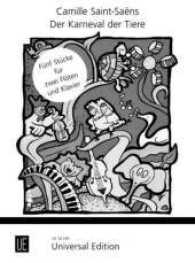- ホーム
- > 洋書
- > 英文書
- > Religion / Ethics
Full Description
Insight into the origins and early development of Islam has become relevant not only to the specialist, but underlies a thorough understanding of debates relating to Islam and the Middle East in the contemporary period. Over the past decades, the field has seen the publication of some excellent in-depth studies on aspects of Islamic history 600-1000 CE, and has also undergone a revision of its own boundaries. Some studies have thus placed the origins of Islam in the wider context of Late Antiquity, and argued for an examination of the development of Islam as a religion and civilization in a broader monotheistic and Mediterranean context.
Moreover, the historiographic debates of the 1970s are far from resolved: in the seventies a new critical approach to the study of early Islamic history emerged, often described as the sceptical or revisionist approach. Questioning the reliability of the Muslim tradition about Islamic origins, the 'revisionists' also at times suggested that it is impossible to recover any kernel of historical truth (what 'actually happened'). Their assumptions and findings have been (and continue to be) criticized in numerous works, though not often in sustained or comprehensive manners. More recently, the field has witnessed a return to more 'conventional' approaches, where attempts are made to recover and reconstruct aspects of early Islamic history by analysis of the transmission history of hadith traditions and their chains of narrators.
An understanding of the sources and the historiography thus remains pivotal to discussions of early Islamic history. This important issue is addressed particularly in the first volume, and in a thorough introduction which draws together the main themes and developments of the period. Early Years of Islam provides excellent reference work and very useful teaching material for a number of different university level courses, in subjects including History, Area Studies, Religious Studies, and Islamic Studies.
Contents
Volume II The Rise of Islam and the Transformation of the Middle East: Introduction to Volume II, PART 1 Theories on the rise of Islam: Arabia and beyond 16 Quraysh and the Roman army: making sense of the Meccan leather trade 17 Religion in the jahiliyya: theories and evidence 18 Hancfi yya and Ka'ba: an inquiry into the Arabian pre-Islamic background of dcn Ibrahcm 19 From believers to Muslims: confessional self-identity in the early Islamic community 20 Namranc (??????8??) and hancf (Á????6?): studies on the religious vocabulary of Christianity and of Islam 21 How did the quranic pagans make a living? 22 The quest of the historical Muhammad PART 2 The conquests and the transformation of the Middle East 23 The conquest of Khezistan: a historiographical reassessment24 'Conclusions' in The Early Islamic Conquests25 From polis to madina: urban change in late antique and early Islamic Syria 26 Conversion stories in early Islam 27 Coptic conversion and the Islamization of Egypt 28 Christian communities in early Islamic Syria and Northern Jazira: the dynamics of adaptation 29 The paradox of Islamization: tombstone inscriptions, Qur'anic recitations, and the problem of religious change 30 Late antique legacies and Muslim economic expansion 31 The feeding of the five hundred thousand: cities and agriculture in early Islamic Mesopotamia.








